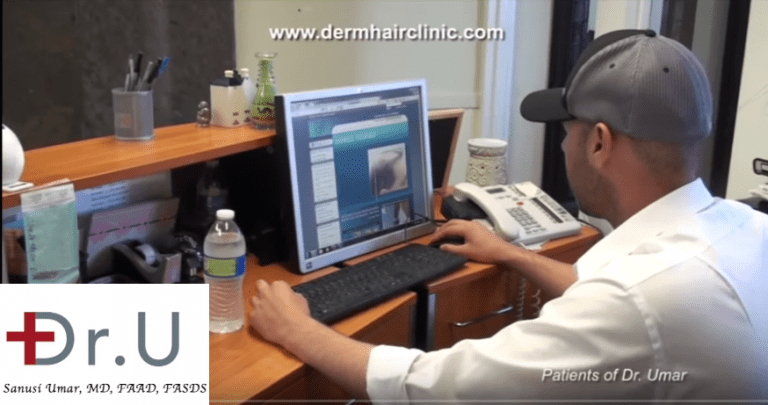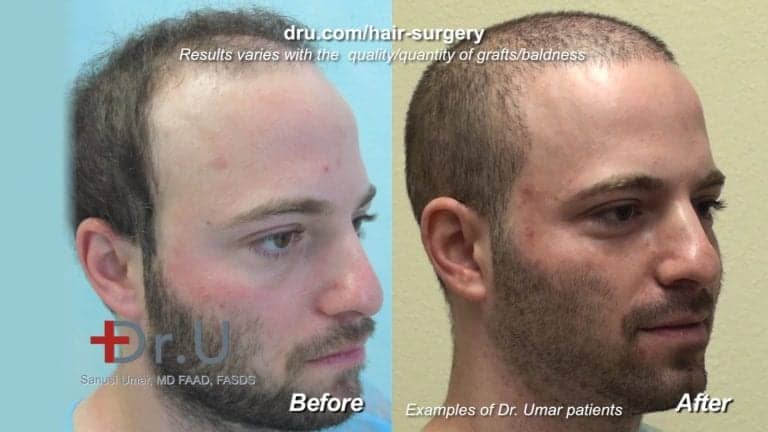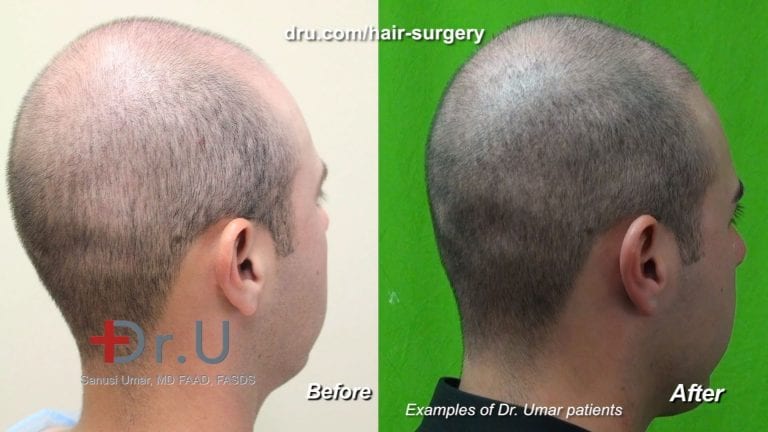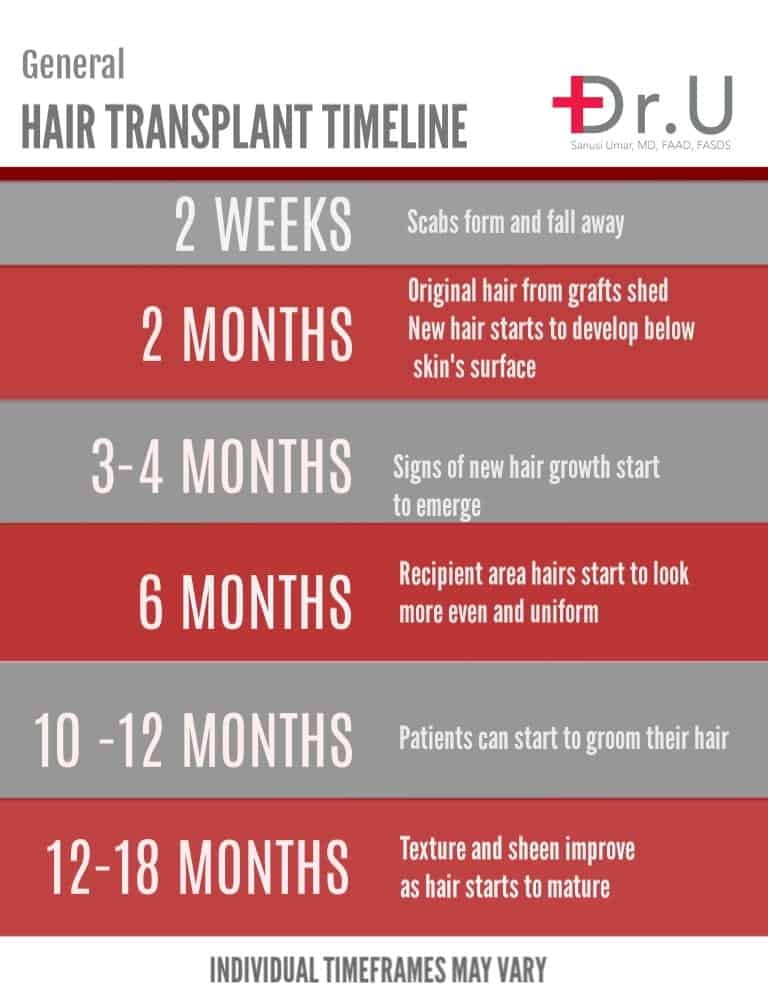The hair restoration journey is a major and extensive undertaking which not only involves the actual procedure itself, but also the initial research stage and months following surgery, when growth yield results manifest. Individuals are often curious to know what is it like to get a hair transplant. In this Q&A video for prospective patients in Los Angeles, Dr. U provides an overview of the hair transplant process from the research phase to seeing the final end results. An awareness of the various stages and milestones involved, can help make the entire experience much easier, mentally and emotionally, as patients know what to expect ahead of time.
What Is It Like to Get a Hair Transplant?
If you are just starting to consider hair transplantation, you may find yourself wondering what the experience is like. According to Dr.U, a good starting point to help you find your answers is by visiting hair transplant forums and seeing what actual patients have to say. Also, take some time to review blogs, vlogs and articles posted by men and women who want to share their experiences with others.
Research the Hair Transplant Process By Asking Relevant Questions

To find the answers that are most relevant and useful for your needs, you must clearly define what you would like to achieve. Here are some examples of questions you may want to consider. Are you trying to reverse your hairline recession? Is your goal to fill in the crown area? What stage of the Norwood scale are you at? Would you like to achieve full coverage or partial coverage?
See if you can find examples of hair transplant patients who most closely fit your profile and your set of goals.
After you have defined what you want to achieve, start asking, how a particular doctor’s skills and techniques can help you attain your vision? Does your case require a more specialized technique?
Start examining different tools and technologies. It will be extremely important for you to learn
how each one works, their limitations and how they would contribute to your final coverage
How to Evaluate the Work of Hair Transplant Doctors
If you just starting out on the hair transplant journey, don’t feel that your own questions, opinions and insights hold no weight.
Quite truthfully, you are perfectly capable of critiquing the work and methodologies of hair transplant providers and making the best decisions for yourself. This is perhaps one of the most important steps you’ll need to take during the overall the hair transplant process.
In the Q&A video above, Dr.U advises taking some time to look at the before and after photos of past patients that specific surgeons have worked on. Ask yourself whether or not the results appear genuine and are presented authentically. Are you able to compare and contrast the patient’s before and after images at different views and angles?
Besides photos, videos can provide an even better source of information. With video footage, it is possible to capture movement of the hair and patient testimony in their own words.


Dr.U also advises that patients become clear on whether or not the actual results were achieved with FUE (Follicular Unit Extraction) or strip surgery.
Sign up for an initial consultation to meet providers in person. These meetings will be a very important part of your hair transplant process. It will be in your best interest to have your questions answered by the actual surgeon who will be performing your procedure. In some clinics, consultations are performed by sales representatives. However, in these contexts, the primary incentive is often to get patients to commit to surgery. An opening on the same day as your consultation may indicate a big red flag, although it is a normal proceeding at many clinics.
If you’ve decided on FUE, find out what punch instrument of choice the provider uses. This is the best time to learn about the technology that will be used. Avoid finding this information out on the day of your surgery.
Ideally, you should be given the opportunity to go home, review what you had learned and evaluate the pros and cons of different clinic providers before making a decision that will affect the rest of your life.
In some cases, it may even be possible to speak one-on-one with actual patients of the clinic.
Once you have made your final decision and have committed to a specific date, be sure to review the information on all your consent forms so that you are aware of the full scope of what will be involved in your procedure.
What to Expect From a Hair Transplant On the Day of Your Surgery?
In learning about the hair transplant process and what happens during surgery, patients often want to know if the procedure is painful and whether or not they will be awake during the excisions and insertions. And they may be curious about other aspects of their operation. Here is a general summary of what happens on the day of your surgery.
Right before your procedure, you will be able to meet the team members who will be performing your procedures. Before your operation, you’ll have photos taken of your hair and scalp areas.
You may want to sit down with your doctor and review your goals once again. Many surgeons will mark the outline of the new hairline and temples. Be sure that the design is aligned with what you want. And go over other specific details you hope to achieve so that there are no misunderstandings.
Once the operation begins, you may be positioned face down for your donor graft extraction phase. Hair transplant surgery is usually performed with local, not general, anesthesia which is administered through injections.
Patients are able to remain awake during their procedure. They can therefore take breaks, use the restroom and even watch television. The local anesthesia helps prevent sensations of discomfort. Sedation may be prescribed when it is not contraindicated. The ability to fall asleep can help make the time pass faster. It also helps the overall experience feel more tolerable and comfortable.
The hair transplant process for the actual operation starts with numbing the donor area (where the hair follicle grafts will be removed) with lidocaine and epinephrine.
After this phase, the operator proceeds with the donor extraction phase. This involves excising and removing the necessary follicular units which are then placed in an aqueous storage medium.
Following the extraction phase is the insertion phase. The surgeon creates slits in the recipient area to reflect very specific hair growth patterns, such as angles, densities directions and orientations. Technicians then place the individual grafts into the slits.
At the end of the surgery, the staff will review post-op care instructions with the patient. A written copy is usually provided as well. It will be important to follow these instructions carefully for successful healing and recovery.
Hair Transplant Results Month By Month
In most cases, patients can expect a timeframe of about 18 months to see the full extent of their results in the course of their hair transplant process. Understandably, most people are eager to start enjoying a brand new chapter in their life with their renewed coverage. This may cause individuals to feel anxious as they wait to see the first signs of growth and continued improvements thereafter.
As mentioned earlier, understanding the typical milestones associated with the hair transplant process and knowing what to expect ahead of time will help make the entire experience feel smoother and easier.
Hair Transplant Growth Chart
Here is a visual representation of the average progress of hair transplant results month by month.

In the first two months, the patient’s original hair shafts will start to fall out. Many people nervously fret when they notice this occurring, thinking that their grafts have been dislodged and are actually coming out of their scalps. But this is not the case.
The hair shafts are being shed because the follicle grafts are producing new hair. So losing hair during the first couple of months is a very positive sign.
New growth usually starts to appear around the third to fourth month. In months, 5-6, patients can expect to see continued improvements, although it will appear patchy. More even and uniform coverage usually develops around the 7th to 10th month. This is usually when patients can start to proudly show off their progress to friends and family. In some cases, it may take up to 12 months to see full growth. However, at this time, the hair has not fully matured. Between months 12-18 is when the patients can start noticing a more desirable texture and thickness start to become apparent.
If you are in the Los Angeles area and would like to speak to Dr.U about undergoing a hair transplant procedure, you may fill out our complimentary online consultation form here:


